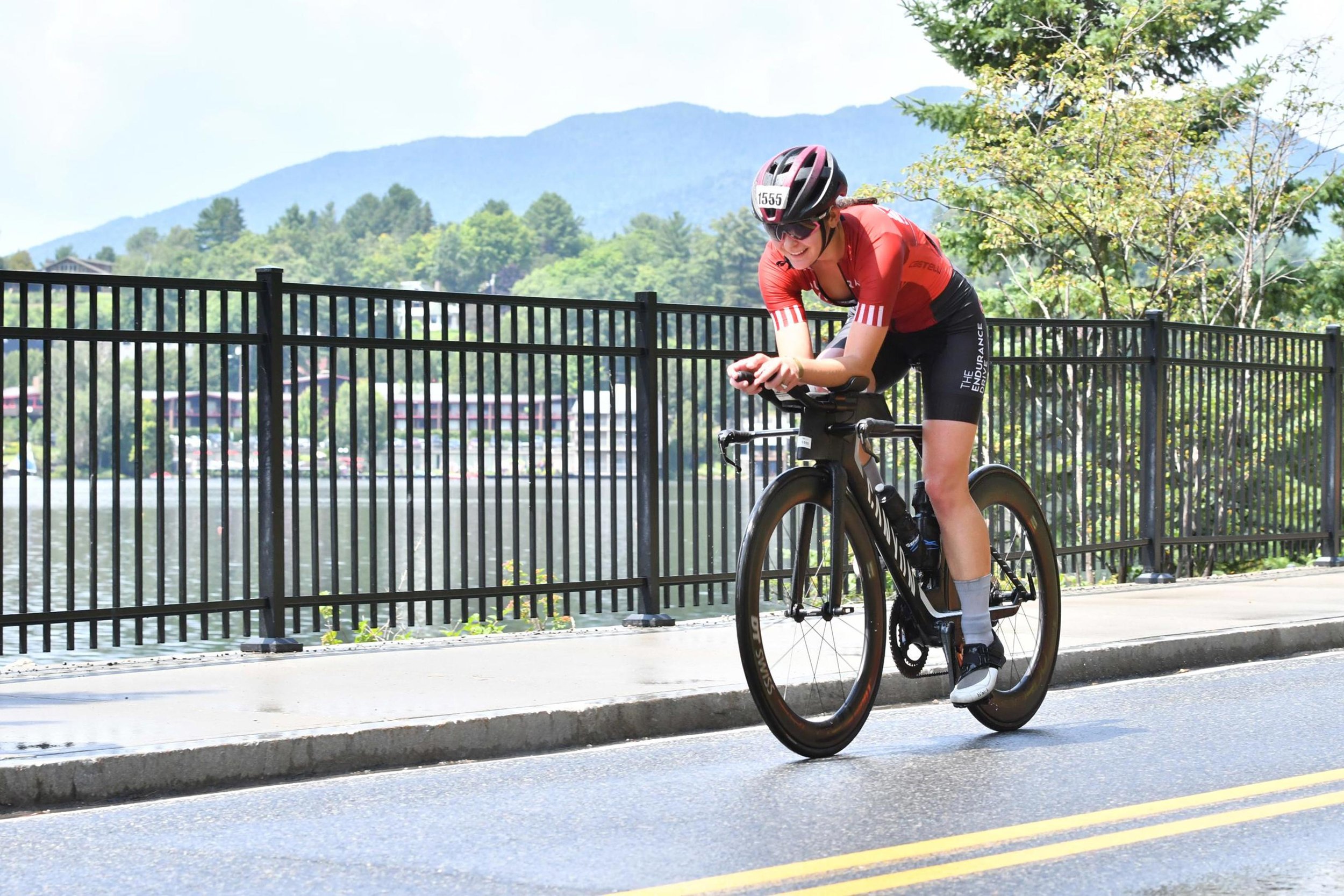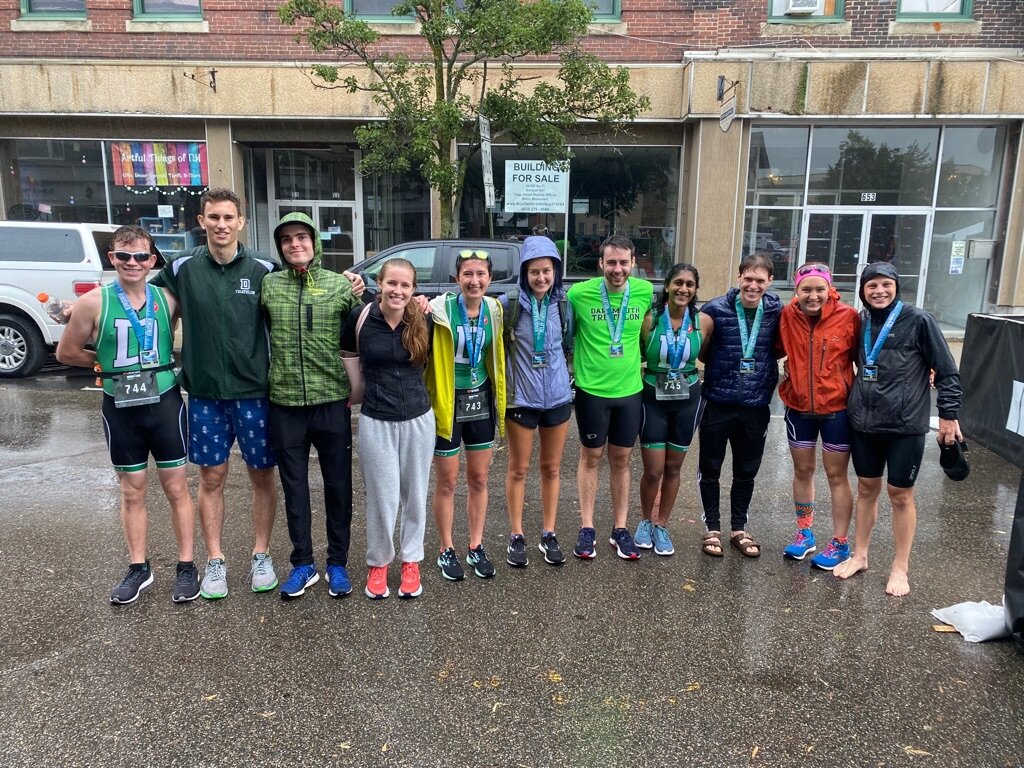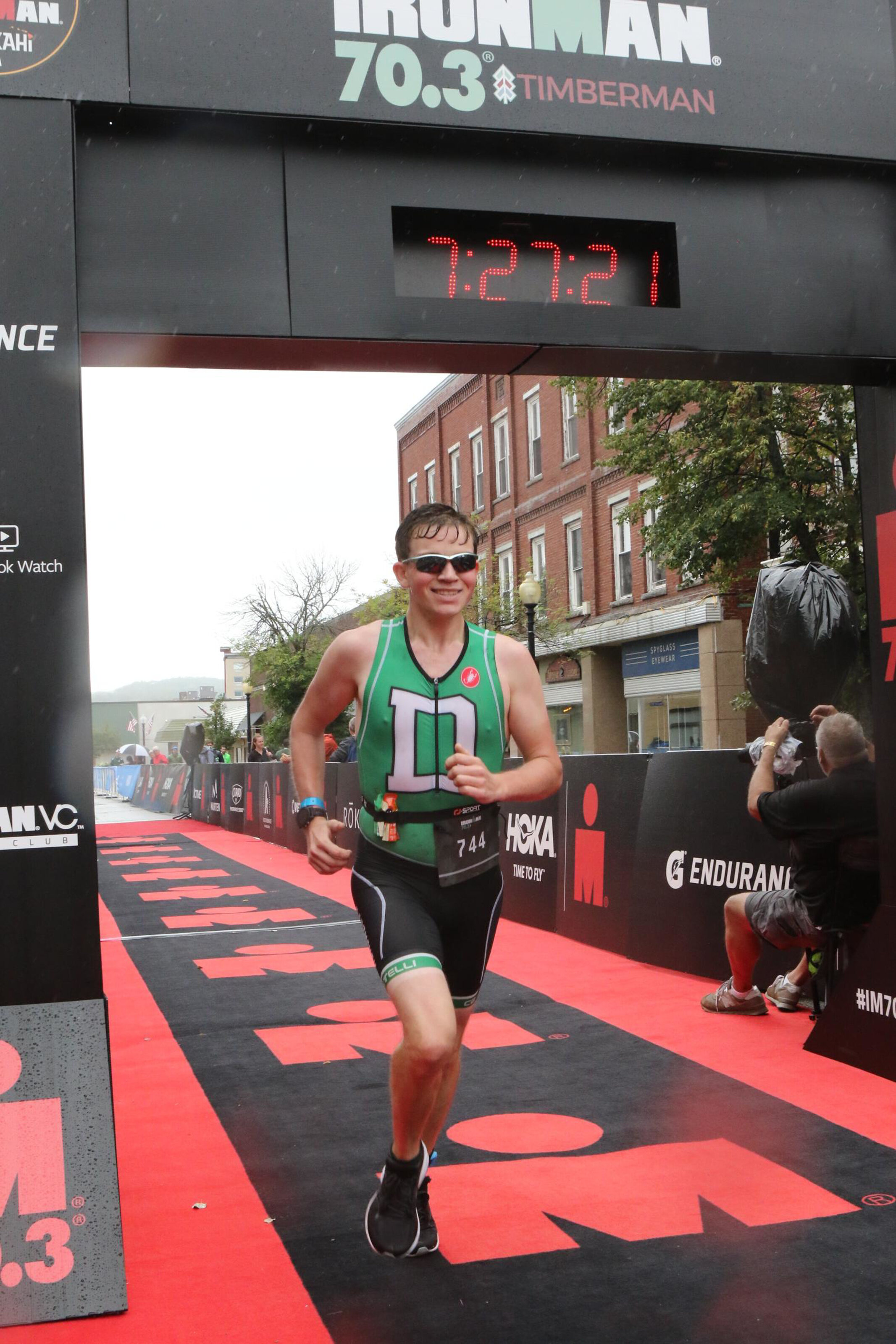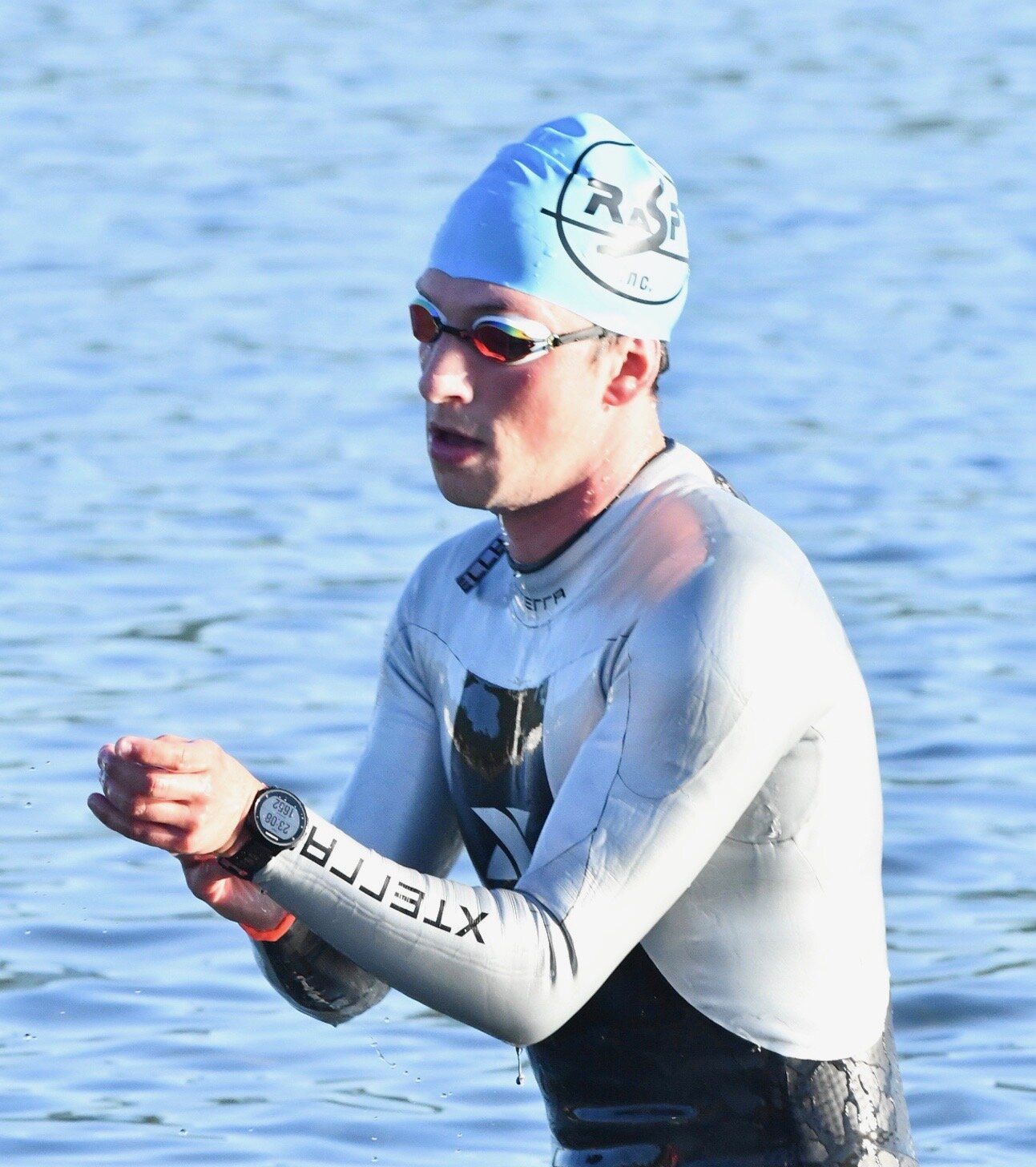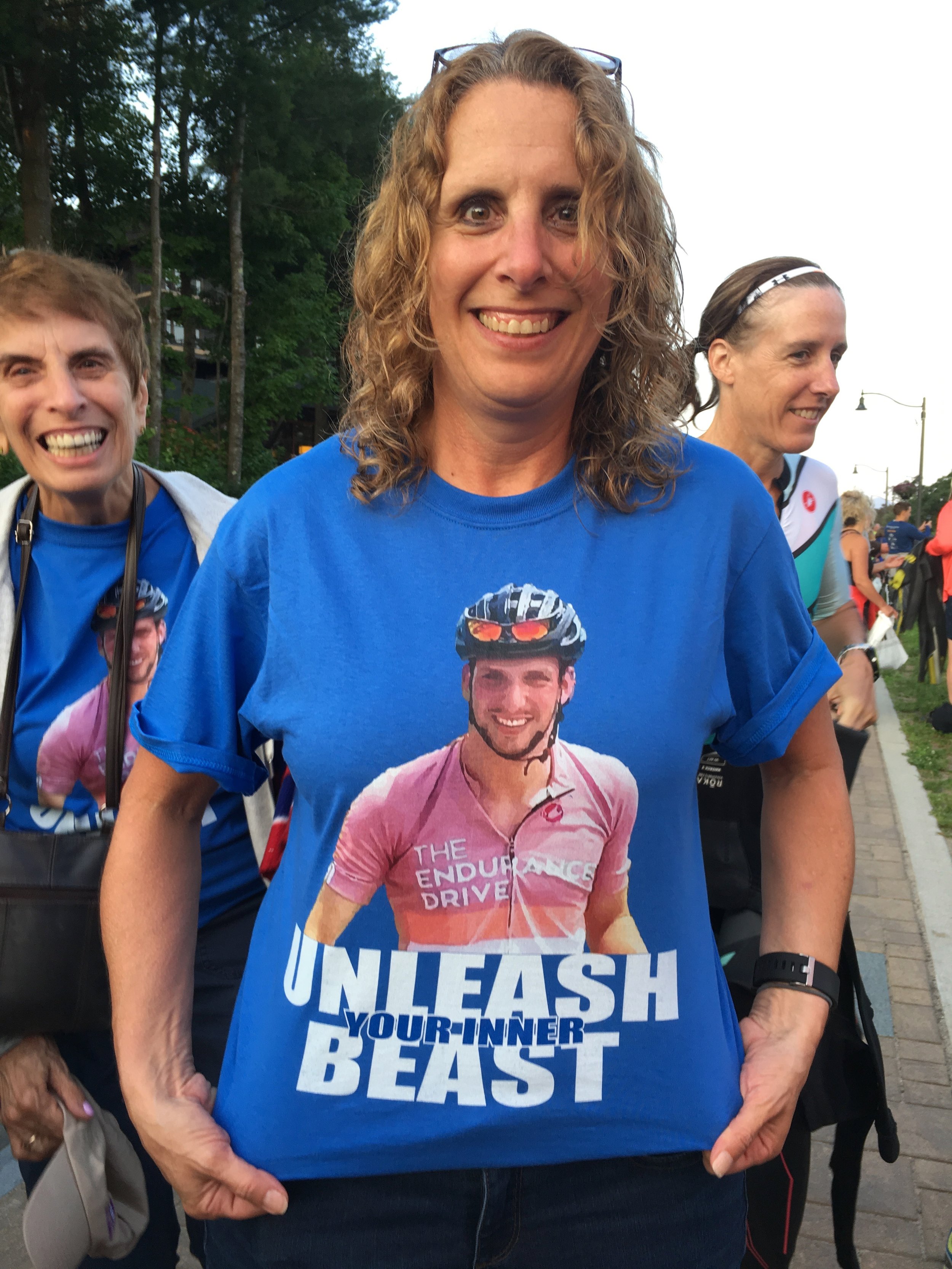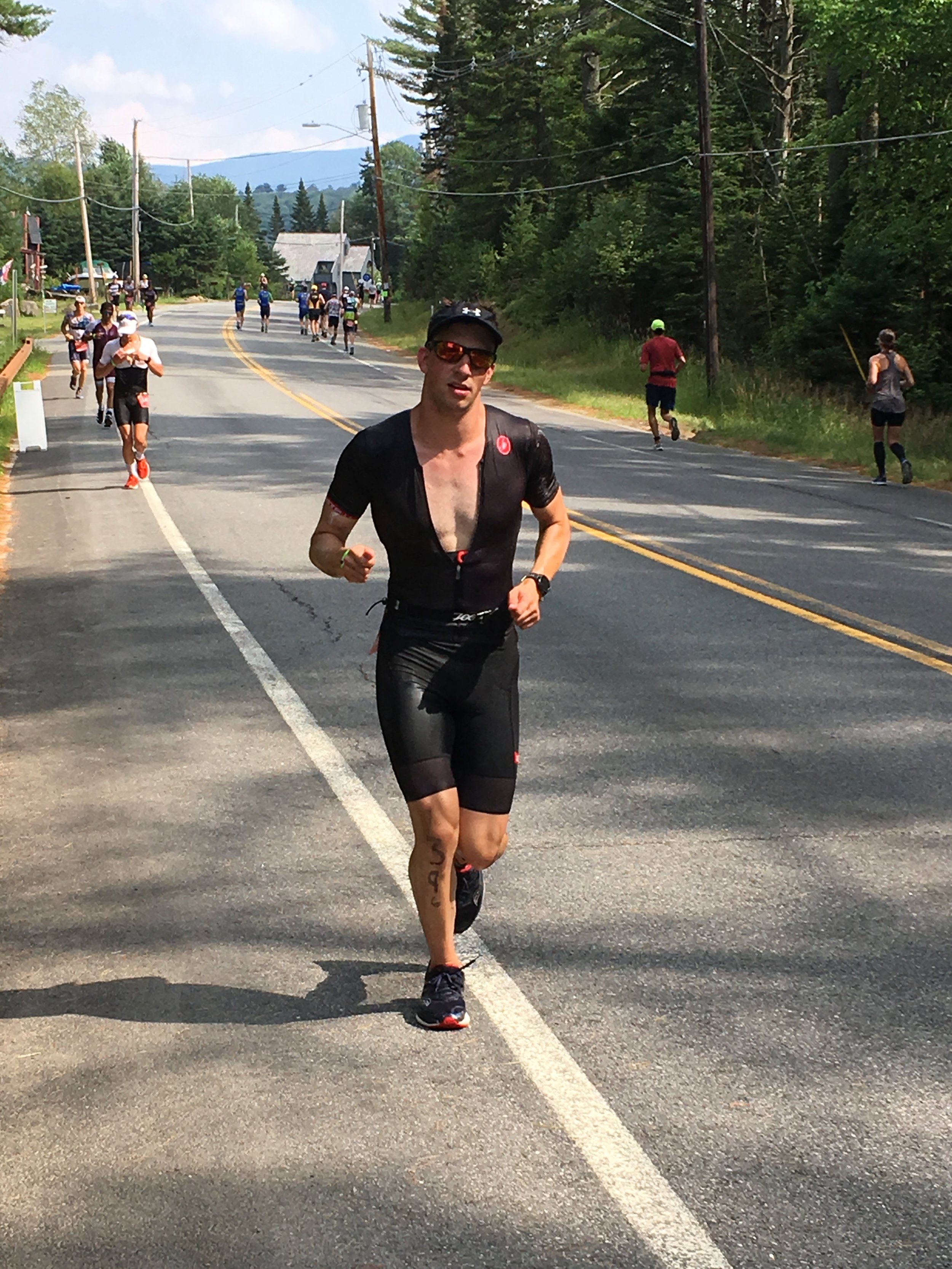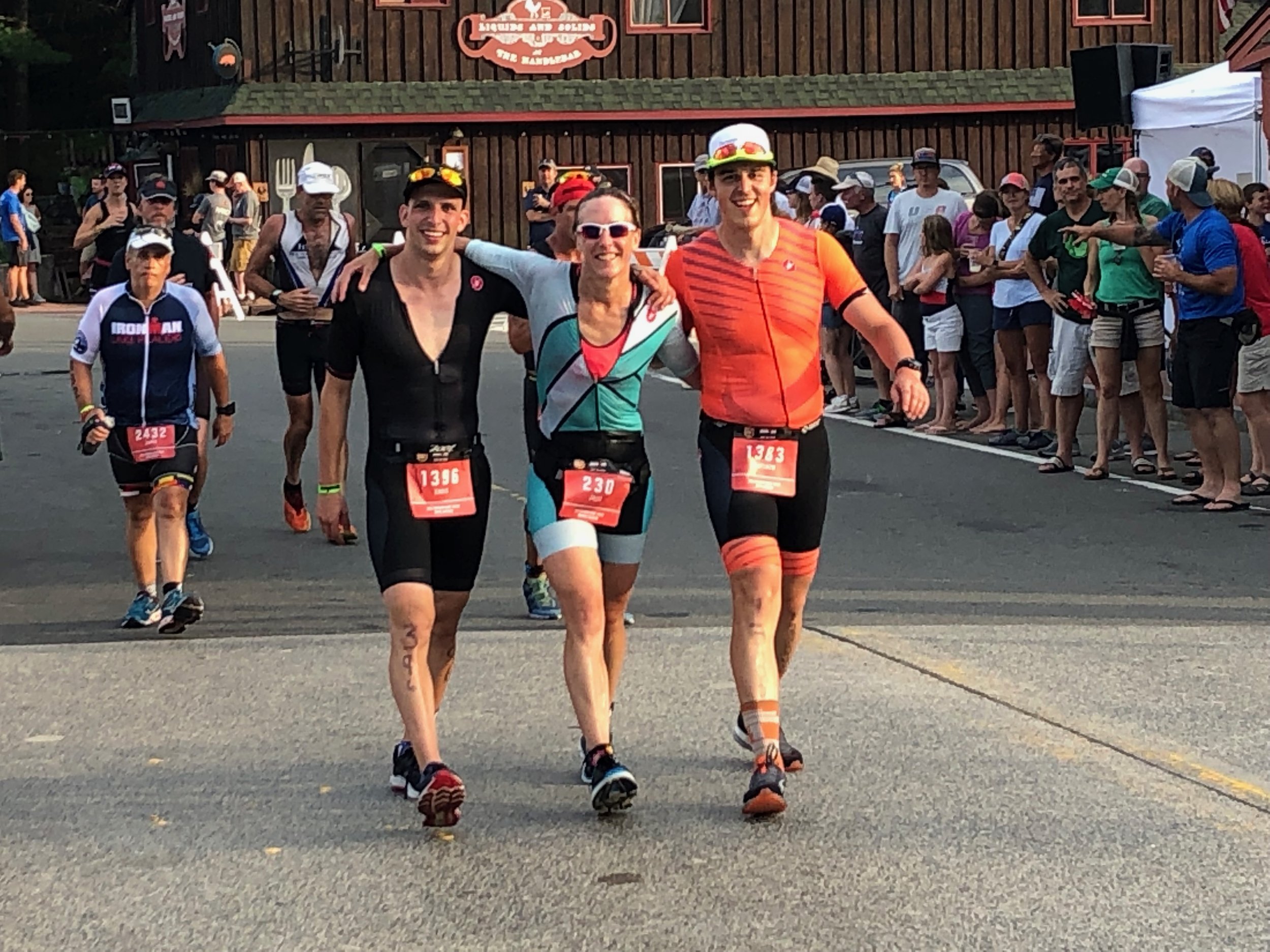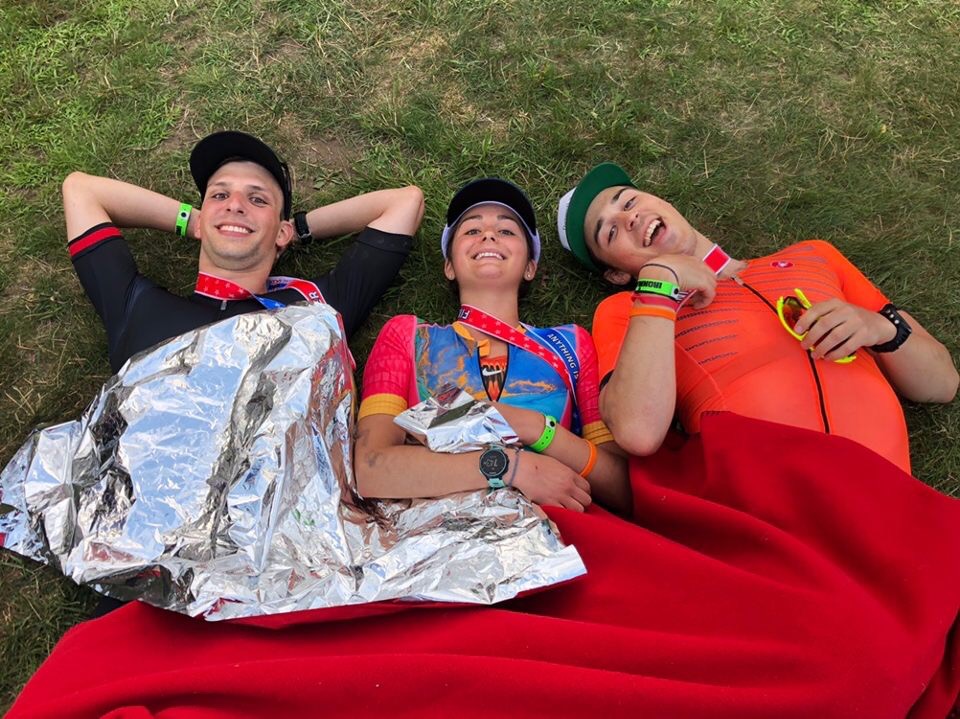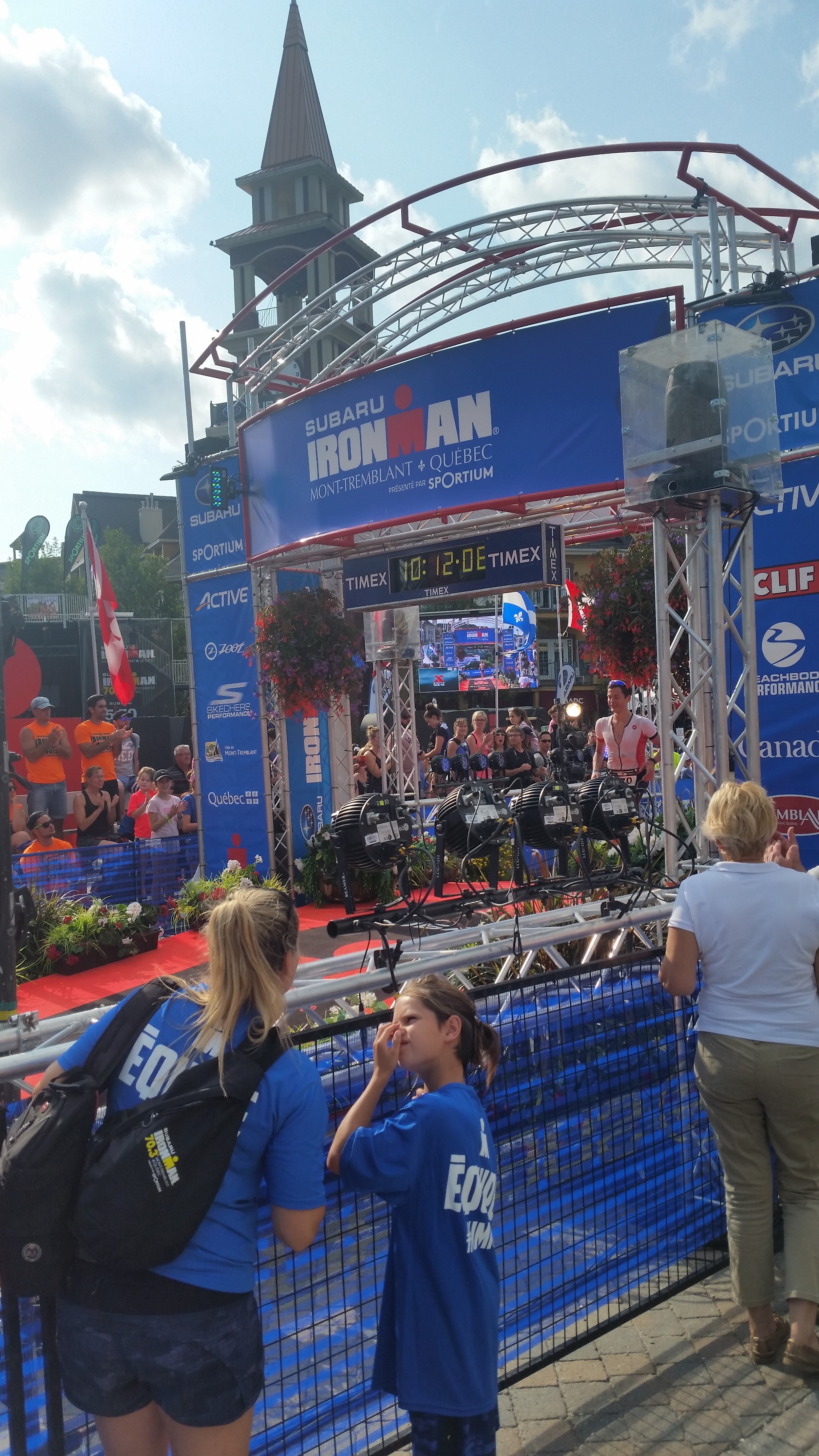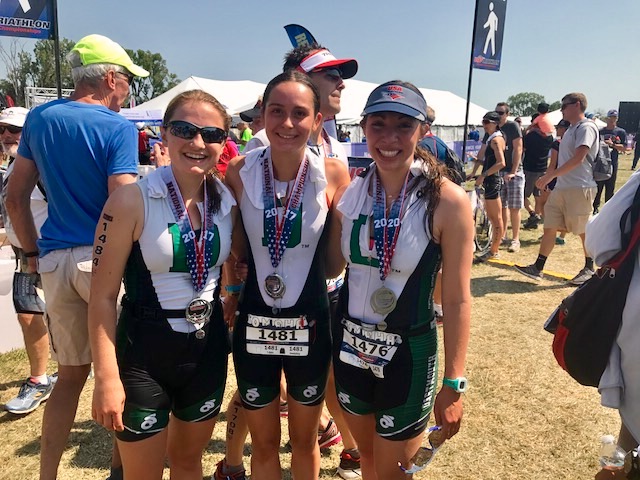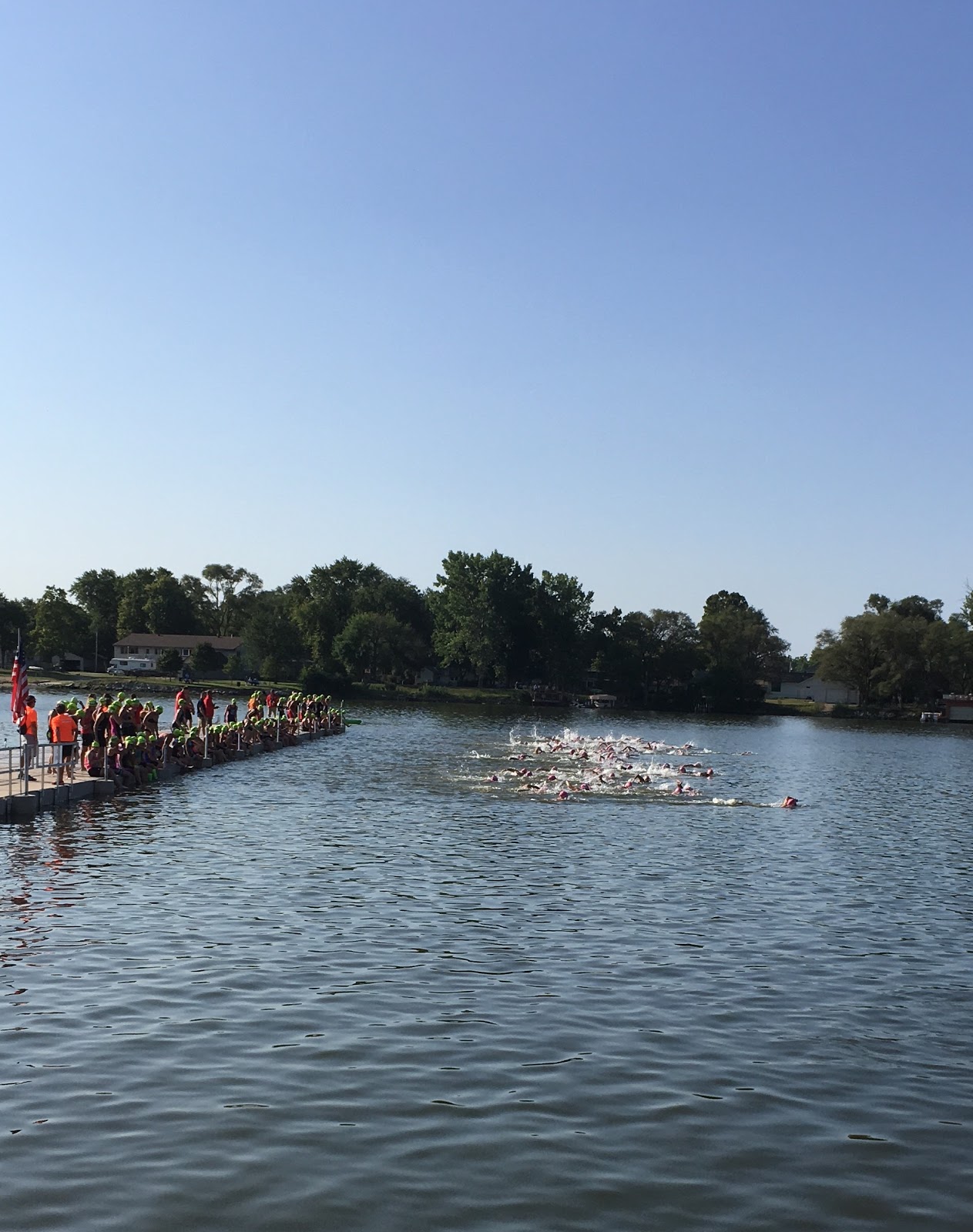About Me
To provide some context for those looking to consume some content for reference. I'm 35 and work as a software consultant and Jim (coach) was able to tailor the training around my travel schedule which was a huge help. NC 70.3 was my 5th 70.3 but my first using a dedicated tri-coach. I had completed a 70.3 each year the past 5 years minus the COVID year. In my previous races, I always ended up bonking out and needing to walk in during the run at some point which was really frustrating since I felt that I was training so hard (which with the knowledge I have now after coaching, was the reason I wasn't performing to my capabilities). During those races I was able to drop my times from 6:35 to 5:33 but still didn't feel great at the end of the 5:33 race at Indian Wells and had to take multiple walking breaks to keep my HR under 190bpm.
I was under The Endurance Drive directive for 6 months prior to the race and felt that I was quite consistent with two 1 week breaks during that span. One week to move to Boston from San Diego and the other week to indulge in Oktoberfest in Germany. The training wasn't overwhelming and at times I felt like it was almost too easy since I wasn't used to ever training in Z2. My HR loves to stay around 160-180 and higher and trying to keep it around 145 (Z2) was really tough at the beginning and I had to run around a 12:00 min pace to keep it there. By the time I reached the race, I was doing my Z2 runs around 10:00. I provide my final thoughts at the end!
Pre-race
I like to wake around 3 hours before the start of the race. On this day, I woke around 4:30 and my dad and I left the hotel around 5:10. During this time I showered and did some thoracic spine stretches and had a fair amount of coffee with a bagel and a banana.
My dad and I drove over to the T1 transition zone so that I could put air in my tires, mix my nutrition and use the restroom. I like to give myself plenty of time where I can relax and listen to some music. The lines for the restrooms weren't terrible at T1 and my dad waited for me so I could put a lot of my gear I didn't need back in his car. Once he left, I walked over to the buses that would take us to the swim start. On the bus ride over at 6:20am, I sat beside a guy doing his 19 70.3 and we chatted about his favorites and it kept my mind off the morning.
Swim
For the swim, the 35 - 37 minute swimmers were in the 2nd parking lot awaiting. The faster groups were awaiting in the first parking lot. During this time I listened to some relaxing music, did some stretches and just tried to keep my heart rate low. I was obviously stressed since my watched beeped at me stating to do some breathing exercises since my stress levels seemed high. Just standing there my HR was around 110bpm and it was cold as hell with everyone else standing around shivering. I took a SIS gel at 7:10 thinking this would be 15 minutes but the start but it was really about 35 minutes before I started. Once our group moved over to the other lot around 7:35am I was able to put my morning clothes bag into the group of large totes in the first parking lot. The atmosphere was great and we crossed the road to where we walked down to the start.
At 7:42 I got into the water and immediately noticed how much warmer the water was than the air. Water was around 69 degrees and it was about 53 outside. This race didn't have nearly as many people climbing over each other and there was a lot more room to spread out since they were releasing 5 people every 5 seconds. I got into a rhythm and felt great from the start. I was surprised on how many people were grabbing onto the life raft/platforms within the first 100 meters. I think for some, it’s the first time in open water and especially very salty water and it can be overwhelming. I was able to sight really well since the sun was on my right eastern side. I felt that I swam the route well and didn't meander too much. The parts that were the most cluttered were the 3 main turns but even this wasn't terrible. The current was pushing us along and people were getting pushed slightly off course so people were trying to swim back around the turn buoys. My heavier than usual load of swim training put me in a great spot and I could tell when I needed to back off my pace some but never once felt tired or overexerting. Once I saw the ladders where the race was finished about 200 yards out, I thought to myself that I could have easily have done that distance again. I typically swim around a 1:50 pace in the pool and swam around a 1:27 pace. The ladders were easy to get up and I didn't have to wait at all.
Swim Time: 32:09
T1
Once I got up the ladders, I ran about 30 yards to the wetsuit strippers and they pulled it off quickly. From there it was about .4 miles of running barefoot on concrete and grass to the first transition. I was lucky to have a great spot that was easy to find near the entrance. I got my swim gear tucked into the T1 bag, got my bike gear put on quickly and was headed off. I dropped my bike after about 10 yards since I wasn't used to pushing the new bike (aero bars were heavier) but luckily it was in soft mud and didn't cause any issue.
T1 Time: 5:22
Bike
I hopped on the bike and within 4 minutes took another SIS gel. It was really slow going the first 5 miles due to how narrow the one lane was and going over the bridges where we couldn't pass. It was within the first 5 miles where I noticed we would be having the solid forecasted headwind. I wasn't really able to get comfortable In aero until mile 6 but then things started to spread out. Initially I felt great on the bike and was able to get the HR stabilized and get into my push/pull rhythm. Around mile 6 we got onto the highways and here I was able to get aero and get a real feel for the bike since my only other long ride on the new QR X-PR was when I was sick. It felt incredibly smooth and handled very well in aero and I could tell I was hitting the quads more with the geometry of the bike. For about 20 miles this one guy kept drafting off me and this lady and she got pissed and called him out on it but he didn't care and continued. He was being reckless and it scared several people we passed. It was really hard not to draft or be near others due to so many bikers but this guy was obviously trying to reduce his headwinds. Unfortunately the course marshal didn't penalize him the 3 times they passed. The headwinds for the first 32 miles were anywhere from 10-15 mph but luckily the highway asphalt was smooth. I recommend not riding on the highway shoulders cause saw several people were getting popped tires from the debris on the shoulders. I was able to keep about 19.5 - 20 mph with all the headwinds and my legs were tired and I was able to keep my HR around 165 - 168 the entire way.
Once we got to mile 32 -35 and start turning around, it was go time. Headwinds turn to tailwinds on out-and-backs. I did have to stop quickly since my front thru axel seemed to be slowly unscrewing for some reason (perhaps knocked loose when I dropped the bike?) but I found an aid station, tightened it, grabbed a water and was able to be get going only losing about 45 seconds. I felt amazing on the way back and I mentally kept telling myself everyone feels great till around mile 35-40 when the wheels fall off and one starts having leg cramps like I usually do, but this time I felt really strong and could tell I was nailing the nutrition. I was able to pick up the speed consistently around 22-24 mph while maintaining the same HR and RPE. The difference between a road bike and a tri-bike were becoming more and more apparent. My support team was even able to drive their car beside me a few times and chat while I was on the highway and they were in the lane beside me which was really encouraging. I did have one guy in front of me starting peeing and looking like a water sprinkler in front of me and that was amusing. Around mile 50 I still felt really good and kept pushing up a notch until we crossed over the big bridge back into the town center. Once we got to the top of the bridge and started hammering down it, I was really excited to get to the run. I came into Wilmington and down some of the smaller streets with crowds cheering along the side and saw the dismount line. My HR was only around 170 at this point which was the best out of any race and I was ready. One thing to note, I was really impressed with how many aid stations there were on the bike course and the volunteers did great.
Bike Time: 2:42 (20.99mph)
T2
I got to the dismount line and expected my quads and hamstring to tense up once clipping me out and I was pumped when I didn't have any fatigued feelings. Even the first steps off the bike felt solid. It was a really short downhill run and again had a great spot where I put up the bike, took another SIS gel, got my shoes and bib on quickly and ran to the exit at the bottom of the hill.
T2 Time: 2:41
Run
The first .5 miles felt really easy at a 8:15 pace and my HR at this point was about 171 once I get into my step. Running through the city at first was really cool since the crowds were huge. The first 1-2 miles had a lot of rolling hills but I noticed my 8:20 pace felt really smooth. I kept telling myself that I needed to stay at the goal of 8:30 pace but with my HR so low at the beginning I figured I could keep up the pace for a little to see how my body would react. Mentally, I kept telling myself to pace easy to be able to have a strong finish but the knees, HR, hips, quads and all told me I had more in me early on. Even on the uphill's I was able to maintain my HR to not fluctuate too much. Around mile 3 I got to the lake area and it was a well shaded section and then the run became a mind game. "Let's get to mile 6 and then and see how I feel". At mile 6 my HR was around 174 and I felt great. It was around here I saw the support crew and it gave me a boost. Mile 6.5 I was at the out-and-back turn-around past the Red Bull blow up and that was even more motivation. "Lets get to mile 8". HR was still around 175 with a pace around 8:10, so it was around 9 where I told myself that I could up my effort and just rip it and hold on from there. I got to a sub 8:00 pace comfortably and knew I had the hilly downtown area coming up but I wanted to see if I could mentally push myself and embrace the suck.
I was really impressed with how my body was continuing to pull from energy stores I hadn't experienced in previous races and I knew then that this training method was paying off. It was around mile 9 I looked at my overall race timer and my first thought was that the watch was off or it wasn't including my transition times cause it was far ahead of my goal. For a moment I thought, "Could I really make it in the sub 5:20 time?!". I found this lady around mile 8 and ended up chasing her to maintain the sub 8 pace. I had my fastest mile as my last mile and not one time in the race did I have to take a walking break for the first time. Coming down the chute was such a great feeling and it was at that point I allowed myself to know that I executed that race as well as I could. I looked up and saw my name and then saw the finish time and couldn't believe it. I finished the run with an 8:08 pace (only 3-4 minutes slower than my fastest ever half marathon) and a final time of 5:08. This was 25 minutes better than my PR and 20 minutes faster than my goal. Train slower to race faster works.
"Don't stop when you're tired, stop when you're finished".
Run Time: 1:45 (8:08 pace)
Nutrition
This made a HUGE difference. Some few small tweaks but I feel like I hit this spot on. I didn't have any stomach issues the issues the entire race and the Maurten's are perfect for my body. I walked each water station and would have 1-2 cups of water and then pour one over my head. Also, this was my first race not consuming solid foods.
John’s nutrition plan for IM 70.3 North Carolina.
Needed Tweaks
Pre-Race
Try to get around 1.5 bagels with a banana closer to race time
Get to 1L of water w/ electrolytes
Swim:
Take a gel around 15 minutes before and not 40 minutes before
I felt hungry coming out the water
Bike
Get to 1L per hour on the bike.
Get to 100g of carbs per hour
Salt tabs worked perfect
Run
I can do a Maurten 100 around every 2 miles
I got noticeably hungry around mile 5 so the extra carbs on the bike are needed
Final Thoughts
Admittedly, I was hesitant the week leading up to the race. It was my first time using a tri-coach (Jim!) and the first time with 80/20 method of training. I knew I was quite consistent with the workouts and was executing them well but I didn't feel like I was pushing myself hard enough. This is probably because with my previous 4 70.3s, I pushed myself around Zone 4 for every workout for months which looking back was just bad training and not allowing my body to recover. When people asked how I felt before the race, I didn't have much to compare to since this was my first time with the method and the 2 warm up tri's were Olympic distances where you push yourself hard the entire race. Once I got to mile 30 of the bike, I noticed that my quads and hamstrings weren't showing fatigue and it was starting to feeling promising. On the run, I couldn't believe I was able to maintain that fast pace and still regulate my HR. I felt like I was really pulling energy from sources I hadn't had before. I kept thinking the wheels would fall off at some point and they never did. Even coming across the line, I didn't feel that I had to kill myself to get to it. It was one of the first times I fully enjoyed the race and didn't have to completely suffer the entire final 2 hours. The training works.
I'm looking forward to training for my first full distance Ironman with the Endurance Drive for August 2024 in Copenhagen!

